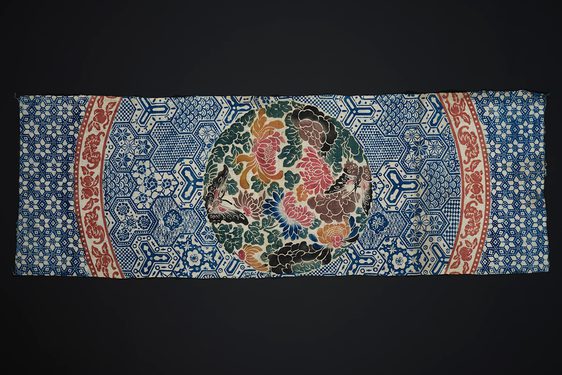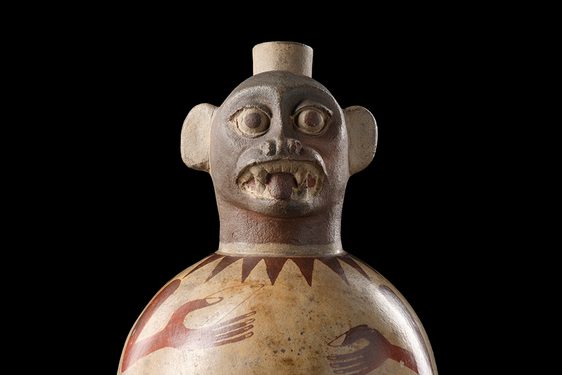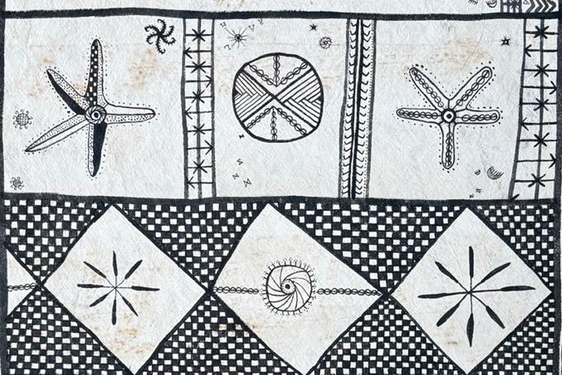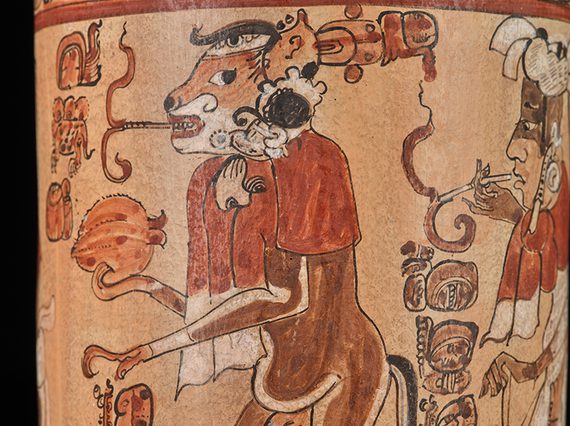
Reviving Mayan ceramics: The Smoking Monkey Vase
News Story
This lively ceramic vessel by Mayan artist Patricia Martín Morales shows a procession of animals and spiritual beings enjoying the intoxicating effects of cacao and tobacco.
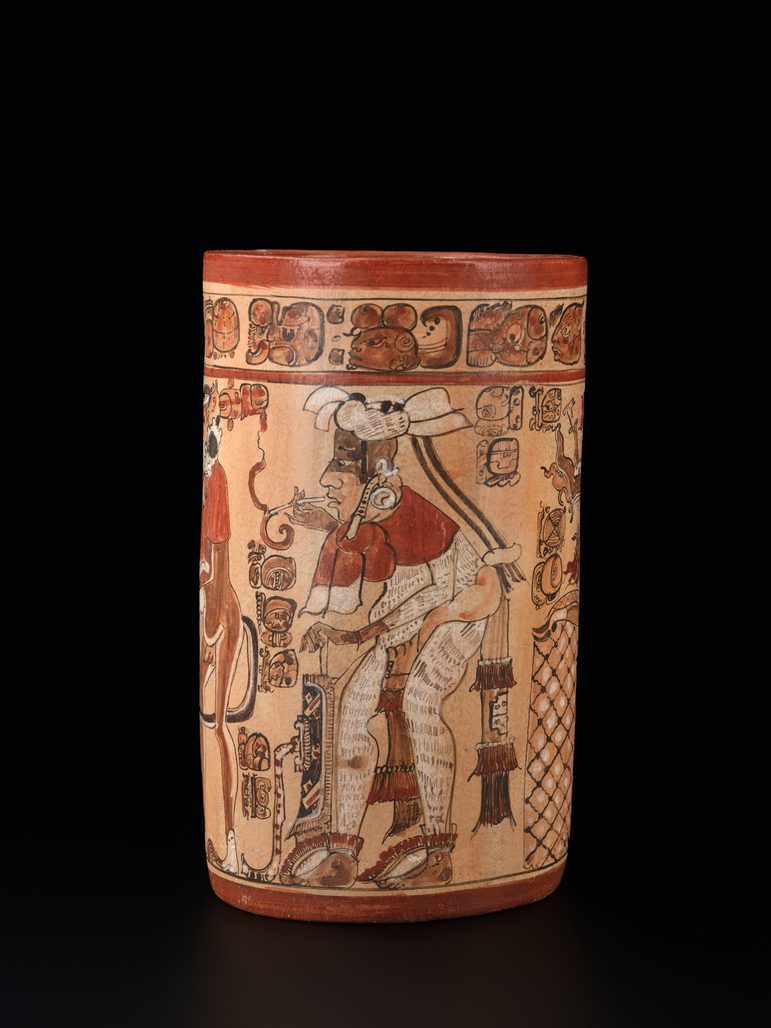
Ceramic vessel depicting four way or spirit companions, including a smoking monkey, deer deity and two male human or deity figures, by Patricia Martín Morales: Maya, North America, Mexico, Yucatán, Muna, 2022. Museum reference V.2023.130.
Reviving the artistry of Mayan ceramics
Mexican artist Patricia Martín Morales has devoted her life to reviving traditional Mayan ceramic production techniques. Through extensive study of archaeological vessels and frescos, she breathes new life into depictions of Mayan gods and re-animates the glyphs. Morales says:
‘I hope that the following generations understand the importance of doing a job like this, because it is something that our Mayan ancestors have been doing for centuries...this understanding will prevent it from disappearing’.
Together with her brother Rodrigo Martín Morales, Patricia runs a small studio called Los Ceibos. They produce unique works of art from a simple thatched hut in a lush garden, close to the Mayan ruins at Uxmal, on the Yucatán Peninsula of Mexico. Using traditional techniques, tools and materials, she combines a mixture of three local clays to make her vessels by hand. Morales's late husband previously also helped run the studio.
The vessels are painted with naturally occurring minerals, pigments and oxides in standardised colour combinations. They are then fired in her garden in a small wood-fired kiln. She adapts her designs from existing archaeological ceramics, and signs them with her own glyph on the underside.
Image gallery
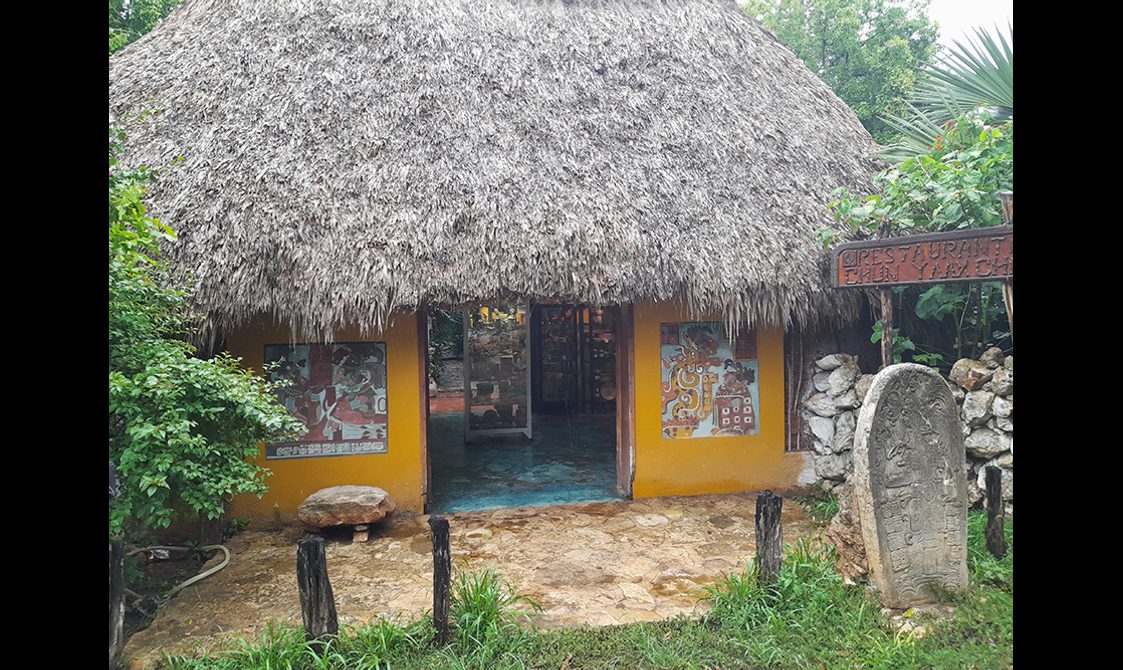
Exterior of Morales's ceramic studio, named Los Ceibos.
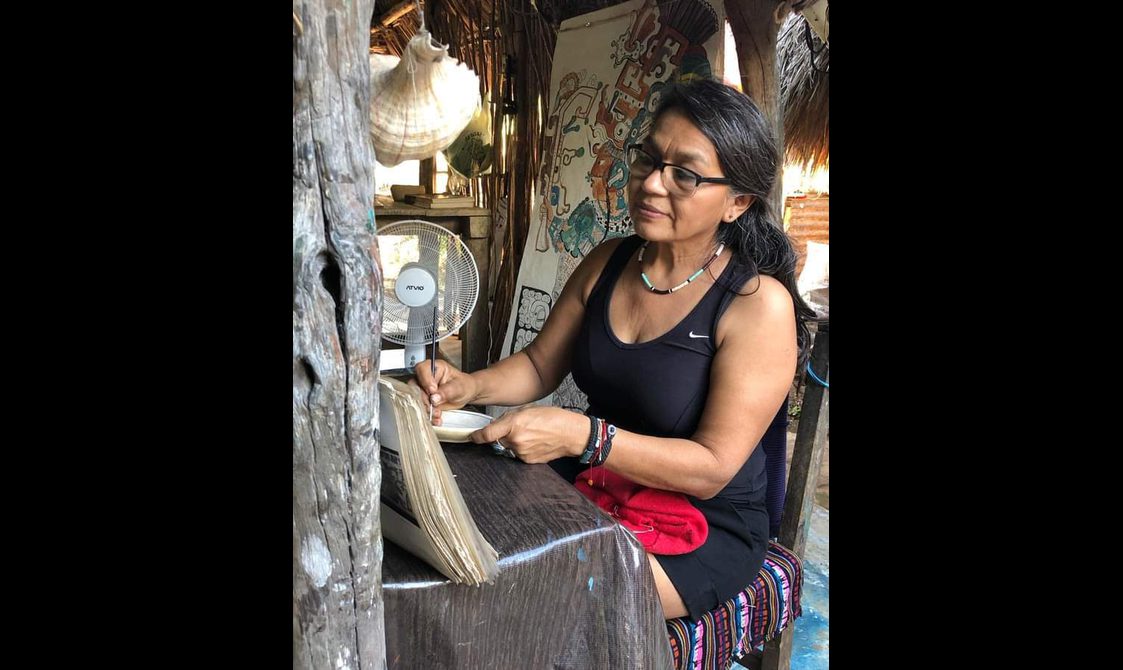
Patricia Martín Morales at work in her studio.
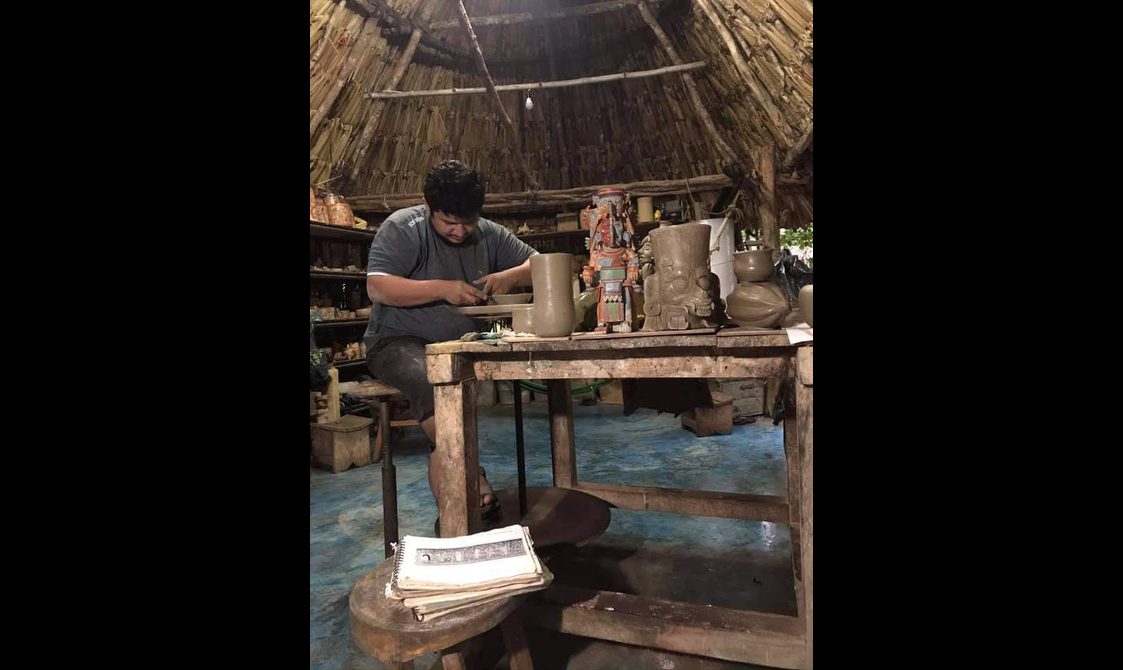
Patricia's brother, Rodrigo Martín Morales, working in studio using traditional techniques.
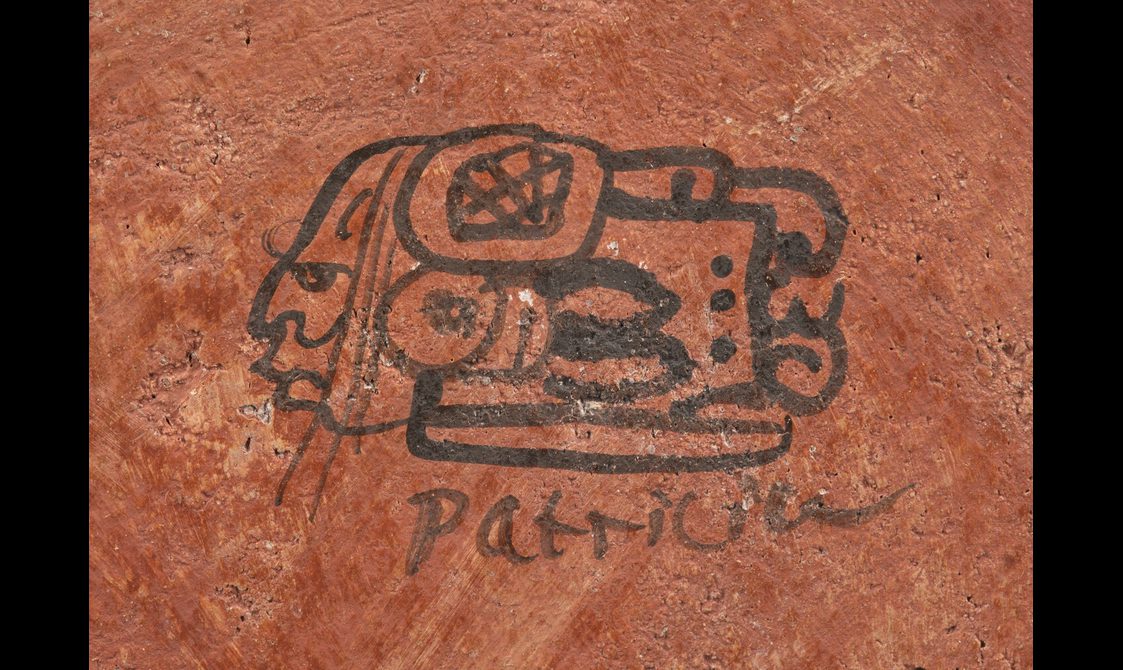

The Mayan ruins at Uxmal, on the Yucatán Peninsula of Mexico, near where Morales's studio is located.
Spiritual guides in the underworld
The original polychrome cylindrical vessel that inspired Patricia is known as ‘The Vase of the Smoking Monkey’. Dating to the Late Classic Mayan Period, c.600–900 AD, it is currently cared for by the Museum of Fine Art in Boston.
Patricia’s vase [V.2023.13] and the original vessel both depict a procession of four figures including a monkey, two human-like figures, and a composite deer deity. They all wear red scarves, indicating that they are wayes, wayan, or wahyob, spirit guides in Xibalba, the Mayan underworld. On a funerary vessel for offerings, they probably represent the wayes of the owner of the tomb, or those that he captured from his enemies during his lifetime.
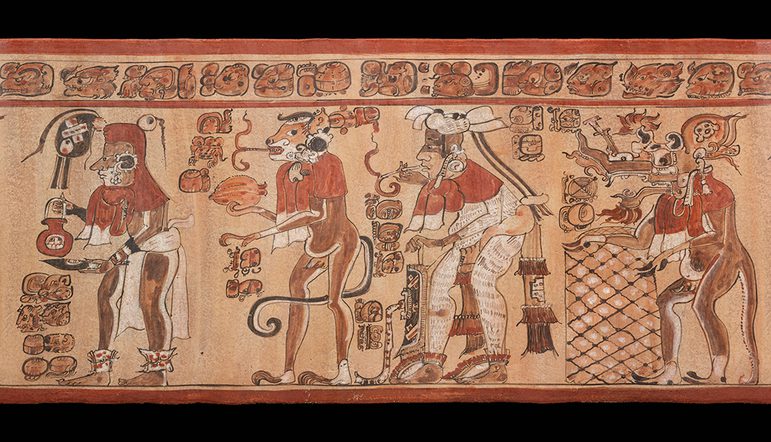
Roll out of ceramic vessel depicting four way or spirit companions. Museum reference V.2023.130.
The Vase of the Smoking Monkey
The original vessel is sometimes known as the ‘The Vase of the Smoking Monkey’ because of its imagery. On the vessel, a spider-monkey smokes a thin roll of tobacco, while holding a large cacao pod. Cacao beans were fermented to create a strong and savoury drink used in ritualistic activities undertaken by the social and spiritual elite, as depicted throughout Mayan art. That Cacao drink is the precursor to our contemporary hot chocolate.
The hieroglyphs in front of the monkey identify him and can be roughly translated as ‘Sun Pelt Howler Monkey.’ Academics elsewhere have classified him as a spider monkey, which he more closely resembles.
Two types of monkey inhabit the Central American jungle. In Mayan art the larger howler monkey is associated with duty and responsibility, while the smaller, more lively spider monkey is associated with fertility, intelligence and mischief. Perhaps as a spiritual being, this figure combines the characteristics of both.
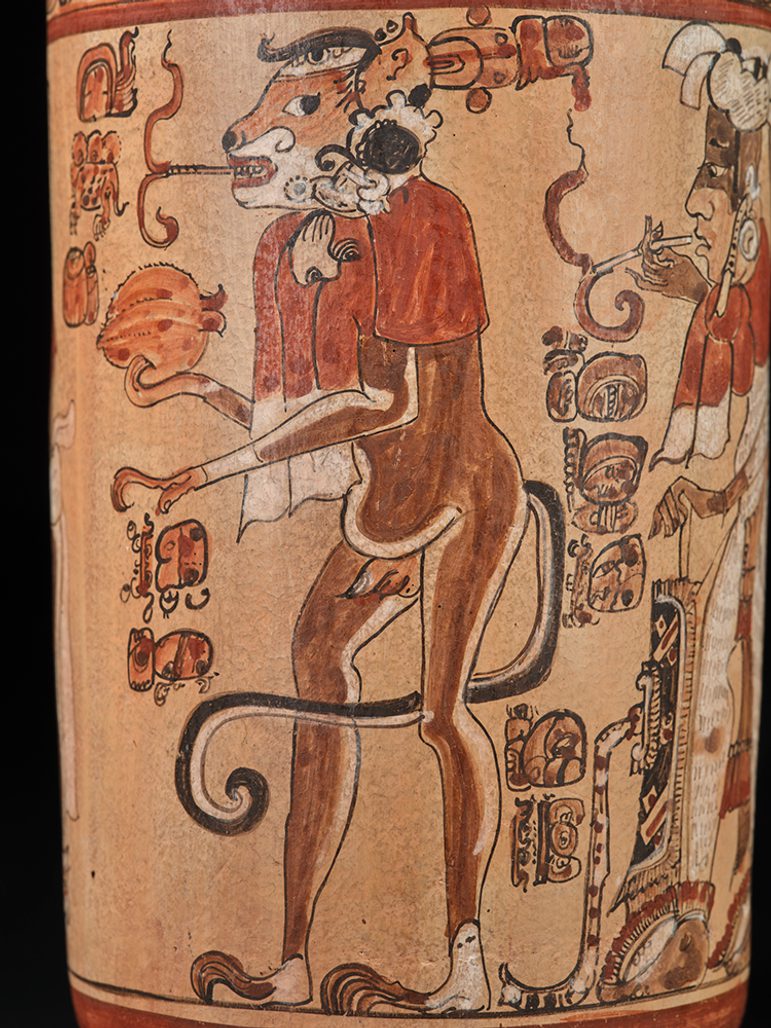
Close up of ceramic vessel showing a smoking monkey. Museum reference V.2023.130.
Supernatural procession
Morales’s vessel shows the procession led by a man who may be a priest or even a god. The man carries a sharp obsidian blade, and an olla vessel which may contain tobacco products. He wears blood-speckled anklets, indicative of being a supernatural being. His large, stylised eyeball on top of his head refers to his role in performing human sacrifices. His hieroglyphs have been translated as'K’an Baah Ch’o’', although he is also associated with various other important Mayan deities.
The second human figure is also depicted smoking. He is dressed or painted in white with a headdress, apron, and blood-speckled anklets, holding what may be a shield or sacred deer saddle. His hieroglyphs identify him as 'Sak'il Winik Ak'an'.
The final figure is a composite known as a serpent deer. He is formed from a combination of natural and spiritual attributes including large jaguar ears, deer hooves, a long tail, and an ornate, complex mask with a long snout. He holds a large net or basket, and has been identified as 'Chiij Kan'.
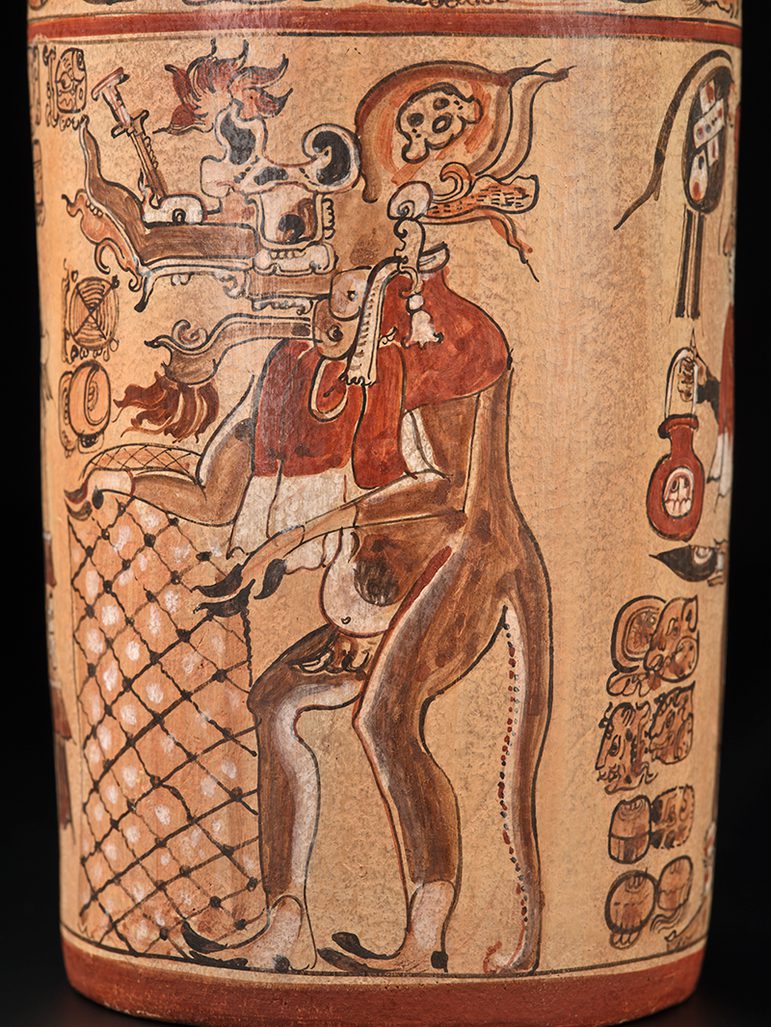
Close up of ceramic vessel showing a composite serpent deer figure. Museum reference V.2023.130.
A drinking vessel for tree-fresh cacao
Around the rim, Morales has painted the original hieroglyphs in her own lively style. Similar Mayan vessels often have a standardised inscription which has been partially translated as:
'Here it is "dedicated" the painting of his cup, his drinking vessel for tree-fresh(?) cacao'. This is followed by the names and titles of the vessel’s owner or patron.
Not all Mayan glyphs have yet been translated, so the original historical vessel’s owner is still anonymous – for now.
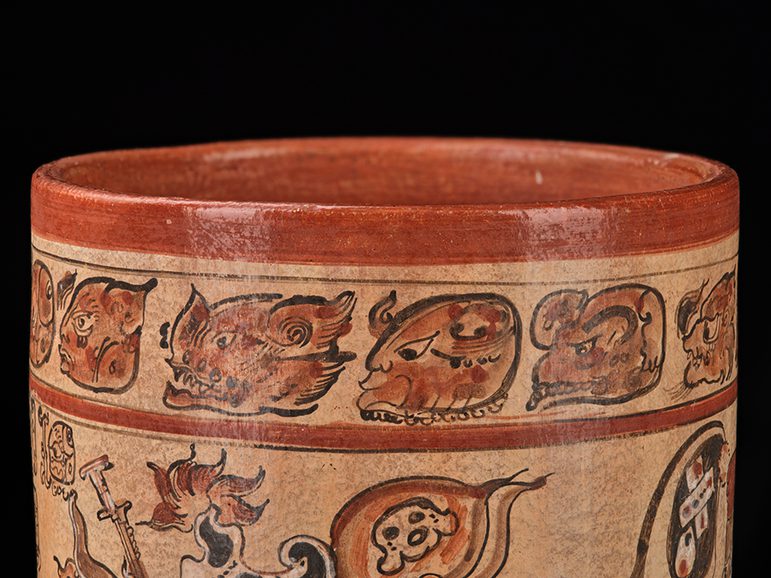
Close up of ceramic vessel showing hieroglyphs. Museum reference V.2023.130.
The Water Lily Jaguar vessel
Another vessel depicts three very similar figures to the vase that inspired Morales, and they have been attributed to the same artist. The artist is known as ‘the Artist of the Smoking Monkey’. On the other vessel, the first priestly figure holds an olla vessel but not a knife, and the monkey protrudes his tongue towards a cacao pod. The third figure in this procession is the Water Lily Jaguar.
The Water Lily Jaguar is a powerful and much-represented mythological being from the Mayan afterlife. He is also depicted on a Chamá-style Mayan vase. Here he dances to the music of three figures with human bodies and animal heads. One is a coatimundi playing the maracas. Another is a possible tapir playing a drum. All three figures wear red and white scarves to indicate that they are wayes or spiritual guides.
From the late 7th–8th century, Chamá-style vases were produced in what is now the Alta Verapaz Department of Guatemala. This was a brief flourish of creativity before the collapse and dispersal of the Mayan cities. Characterised by a black and white chevron pattern around top of the vessel, Chamá-style vases also typically have pseudo-glyphs. These give the appearance of Mayan glyphs but do not actually say anything. Literacy was declining as Mayan society struggled with political turmoil. This was possibly caused by overpopulation, excessive building, and climactic disasters such as drought and consequent famine.
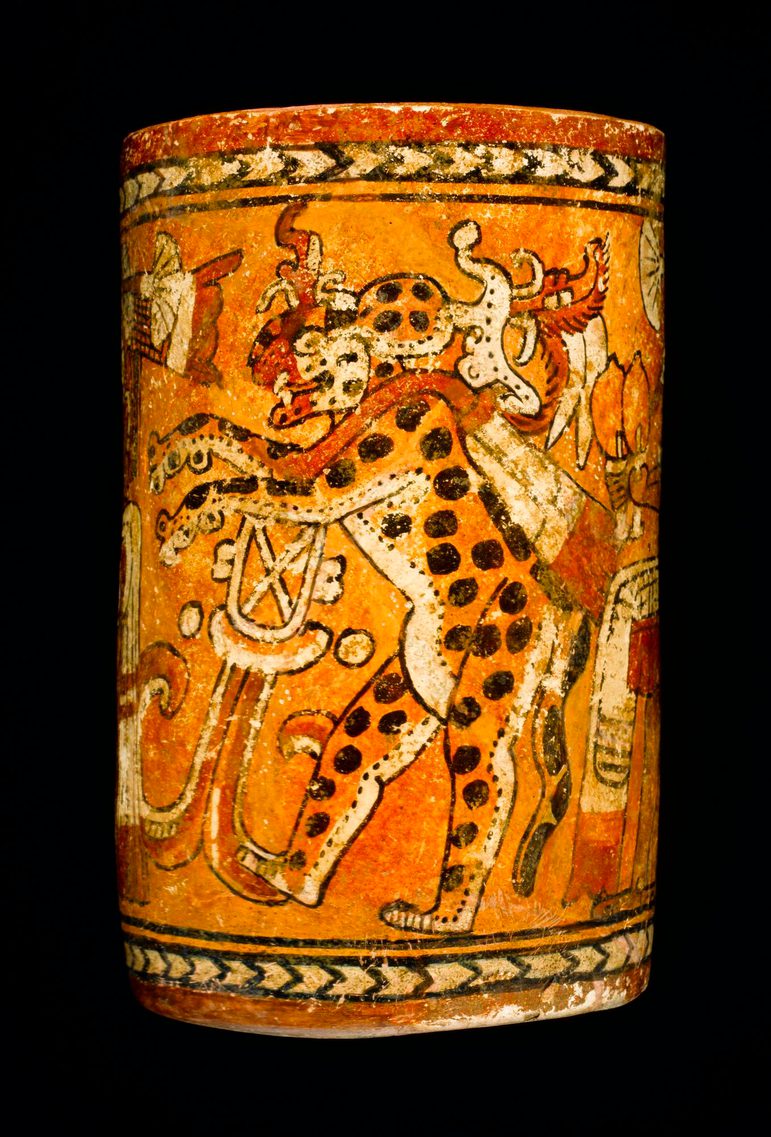
Cylinder vase showing a dancing Water-lily Jaguar accompanied in a procession by three spirit companions or wayan. Central America, Guatemala, Alta Verapaz, Chamá-style, Maya, c. 600-800 AD. Museum reference A.1976.283.
Ceremonial tobacco smoking
Throughout the Americas, tobacco and other plants and fungi have been used in ceremonies and rituals. The substances act as offerings to the gods and to facilitate shamanic divination. In Indigenous communities in North America, tobacco continues to be traditionally smoked through a pipe. From Mexico southwards, cigars and cigarettes are more commonly represented in historical art.
The earliest artistic depictions of smoking rolled tobacco leaves are found in Mayan art, from about 1000 BC. The English word ‘cigar’ derives from the Mayan word sikar which roughly translates as ‘to smoke tobacco leaves.’
Depictions of smoking occur across Mayan stone carvings, ceramics, and frescos. Smoking is portrayed as a status symbol and spirituality enjoyed by gods and nobility. Animals such as spider-monkeys, jaguars, and frogs are also often represented smoking. Smoking was so closely associated with deities and rulers that a rolled and smoking cigar is often depicted in their ceremonial headdresses. It was also believed tobacco offered protection from ill health, snakes and scorpions, and it was used as medicine and in healing rituals.
It may be that substances other than tobacco were being smoked, as participants are often shown in states of delirium and intoxication. Alternatively, original wild tobacco may have contained a much stronger concentration of nicotine than the contemporary domesticated plant.
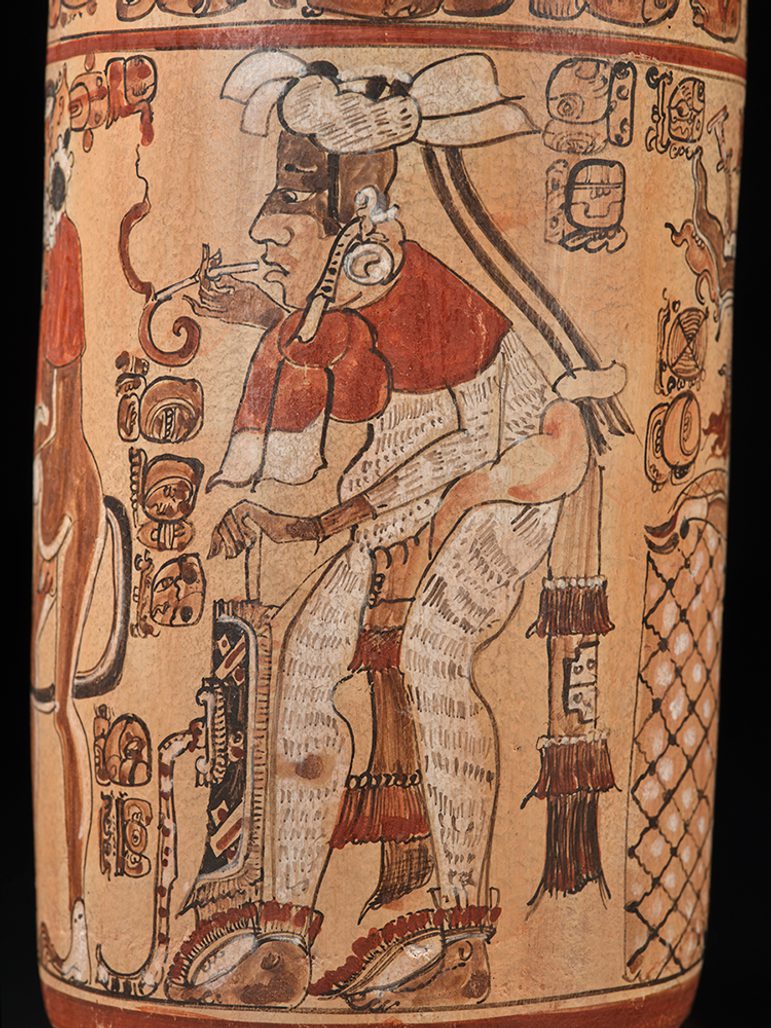
Close up of ceramic vessel showing a smoking man. Museum reference V.2023.130.
Intoxicating pleasure
An Aztec poem by the poet Tlaltecatzin, (c.1320–1409 AD) references the importance of the intoxicating pleasures of cacao and tobacco during rituals. It also captures the beauty and yearning of this transitory world, but ultimately the solitariness of death:
…in our place where the lords command,
the flowering chocolate drink is foaming,
the one which intoxicates men with its flowers.
I yearn,
my heart has tasted it,
my heart has been inebriated,
my heart knows it.
The flowering chocolate drink is foaming,
the flower of tobacco is passed around,
if my heart would taste them
my life would become inebriated.
The Smoking Monkey Vase is now on display in the Inspired by Nature gallery at the National Museum of Scotland.
Written by

Victoria Adams
Assistant Curator, Oceania and Americas
